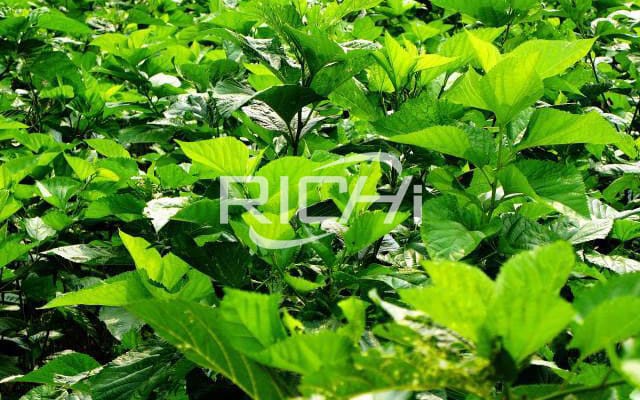1. Do chickens eat mulberry leaves?
- The chicken does not eat mulberry leaves. When it comes out of the eggshell, it will eat mulberry leaves in the first bite. After a long time, it will adapt to this taste.
- In order to let the chickens get used to the taste of mulberry leaves, they are not given fresh mulberry leaves, but mulberry leaf powder, which is the powder that is ground after mulberry leaves are dried. Mix the mulberry leaf powder with the chicken feed, and let the chickens eat from birth, so that the chickens will gradually adapt to the taste of mulberry leaves, and when the chickens grow to young chickens, they can be used Put it in the mulberry garden to eat mulberry leaves to replenish the body.

2. How to process mulberry chicken feed?
- Mulberry leaves contain 15%-30% crude protein, 4%-10% crude fat, 8%-12% crude fiber, 30%-35% nitrogen-free extract, and are rich in vitamins (C and B groups) and amino acids (complete variety) and mineral elements (mainly 8 species, with potassium, calcium, iron, zinc, and manganese higher than corn or green alfalfa). They also contain many biologically active substances (phytosterols, flavonoids, alkaloids, polysaccharides, etc.).
- Mulberry leaves can be eaten fresh or dried, crushed, and used with other feeds. Because fresh leaves have about 70% moisture, the proportion in the diet should be limited and combined with other feeds. Dried, crushed leaves added to chicken feed at 5%-10% can improve yolk color, egg quality, egg production, chicken flavor, and reduce ammonia emissions.
- Dried mulberry leaves can also be added to cattle and sheep feed, pig feed (25%-30%), or rabbit feed (10%-15%), enhancing health, growth, meat quality, and reducing costs.
3. Does planting mulberry trees make money to raise chickens? Which mulberry tree is good for raising chickens, and how many mulberry trees are planted per acre?
- If only raising chickens, forage mulberry is best, with 1,330 trees per acre.
- Combining planting and breeding yields the best effect. Fruit mulberry produces 5,000 catties of fruit and 6,000 catties of leaves per acre, with mulberries sold for profit — ideal for rural income.
4. RICHI factory price poultry chicken feed pellet processing line
- Whether for a family farm or feed factory, chicken feed pellet processing involves more than mixing — it requires crushing, pelleting, and other stages. The process of a chicken feed pellet production line is:
- Cleaning Machine — ensures GMP standards, removing impurities.
- Conveying Machine — includes bucket elevators, screw & chain conveyors for raw materials and finished goods.
- Grinding Machine — grinds raw materials to 225 microns using a chicken feed crusher.
- Mixing Machine — blends raw materials with additives, oil/fat, medicines using a chicken feed mixer.
- Pelleting Machine — forms complete chicken pellets using a chicken feed pellet making machine.
- Cooling Machine — reduces extruded feed temperature from 70-90°C to near ambient.
- Screening Machine — ensures uniform pellet size by removing uneven particles.
- Bagging Machine — packs finished pellets, manually or automatically.
5. Some typical turn-key poultry chicken feed pellet plant projects:
- Afghanistan 10T/H turn-key poultry chicken feed production line machinery
- Uzbekistan 15 tons per hour chicken feed making plant
- Ethiopia 5-6T/H poultry chicken feed manufacturing plant
- Kenya 5T/H ton per hour poultry chicken feed pellet making plant
- Zimbabwe 3-5 ton per hour poultry animal feed processing plant
- Colombia 3-4T/H complete automatic chicken animal feed pellet making plant
- Saudi Arabia 15-16T/H automatic chicken feed processing line plant
- Papua New Guinea 1-2T/H chicken feed pellet processing plant


